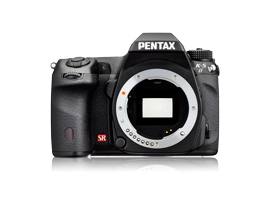Introduction


With an overall score of 82 the Pentax K-5 II (and its predecessor the K-5) are at the same level as the likes of the Canon EOS 5D MKIII, which scored 81. At the time of writing, it is actually eleventh out of ALL current cameras, only trailing behind offerings from Phase One and Nikon, each costing many times as much.
The individual Use Case Scores are equally impressive: Landscape at 14.1EV of dynamic range is the best in class and Sport at 1235 ISO it just pushes the Nikon D7000 into second place in this very competitive category. The Portrait score shows a color depth of 23.8 bits which places it second in class – just, to the Sony SLT Alpha 77.
When a company launches a new model there is usually an expectation that there will be improvements in the performance (a hope that is not always fulfilled), but here it seems that with the same sensor as the K-5 Pentax has settled, quite reasonably, for the same performance and have remained in the lead.
Pentax K-5 II vs. Pentax K-5
The Pentax K-5 was released in September 2010 (review for the Pentax K-5), just over 2 years before the K-5 II. What Pentax appears to have done is to incorporate the last 2 years worth of technological advances into essentially the same camera.
There is an increase in the low-light performance but it is very slight. Reading through the specifications side by side they could almost be interchangeable. The differences that are there include an improvement in the performance of the image stabilization system in low light, an increase in the size of the image buffer allowing a greater number of images to be captured continuously, and the screen now boasts an airgapless coverglass offering better viewing contrast. Otherwise, the changes seem to be to the software. As the name suggests, this is a version two, not a completely new camera.
Pentax K-5 II vs. Sony SLT Alpha 77
While there is not a huge amount of difference between the Pentax K-5 II and its predecessor, when you make a comparison between it and one of its competitors from another manufacturer the differences are quite impressive.
The overall score of the Pentax at 82 beats the Sony SLT Alpha 77 by 4 points yet the Sony is around 50% more expensive. The Sony is fitted with a 24Mpx sensor against the 16Mpx unit in the Pentax, this does favor the Alpha 77 in sheer file size but the sensor with fewer, larger pixels provides better dynamic range.
So unless you really need the extra data, having slightly less, but of a higher quality, would seem to be a reasonable strategy. The individual Use Case Scores place the Pentax just below the Sony for Color depth but show a very impressive 14.1 EVs of dynamic range, nearly a full EV ahead of the Alpha 77. With a half stop advantage in low light performance, the figures for the DxO Mark scores make the Pentax K-5 II a formidable opponent.

The Sony SLT Alpha-77 utilizes a fixed, translucent mirror that accounts for the inferior low light performance since a portion of the available light is always going to be used for the viewing system.
However it enables it to work very fast, up to 12 frames per second, this is very fast compared to the Pentax which will capture up to 7 frames per second. For some people, especially those working in sports or other fast moving subjects this could be important, but reading further into the specifications the Sony can maintain this speed for only 13 RAW frames while the Pentax carries on for up to 20. So choosing between 13 frames at about 83ms intervals: just over one second, or 20 frames at about 143ms intervals: just under 3 seconds would seem to be the hardest choice you need to make.
It does need to be pointed out here that the Sony SLT Alpha 77 scored very well and should be taken seriously, it is a very good camera, but in the testing protocols used by DxO Mark the Pentax K-5 II has done exceptionally well.
Pentax K-5 II vs. Nikon D700 vs. Canon EOS 7D
The story is similar when making a comparison with other cameras in this category, for instance the Nikon D7000 or the Canon EOS 7D. These are equally positive for the Pentax K-5 II. While each has some benefit, the overall picture is that the K-5 II is a superb all-rounder.

The Pentax K-5 II is a remarkable piece of kit, it scores better in the DxO mark tests than several very highly thought of, full frame DSLRs, beating all the cameras made by Canon! It manages to do this in a body that is very reasonably priced. Add to this that you can fit lenses to the K-5 II that Pentax made as far back as 1975 and the multitude of independent lenses that are available and this camera becomes not only a remarkable performer but also a fantastically versatile camera at an exceptional price.









DXOMARK encourages its readers to share comments on the articles. To read or post comments, Disqus cookies are required. Change your Cookies Preferences and read more about our Comment Policy.